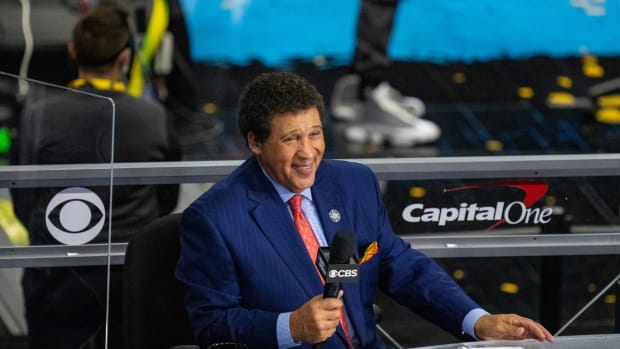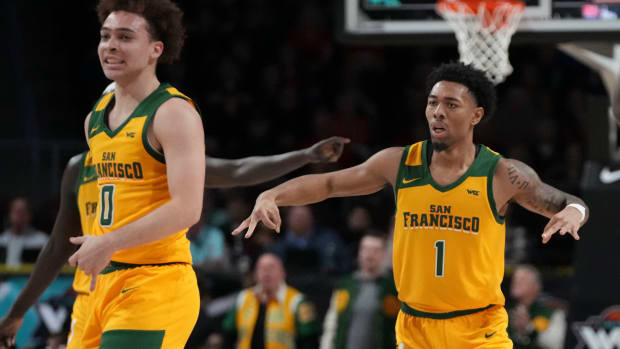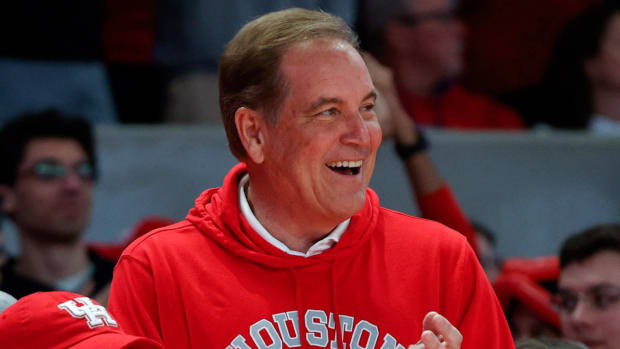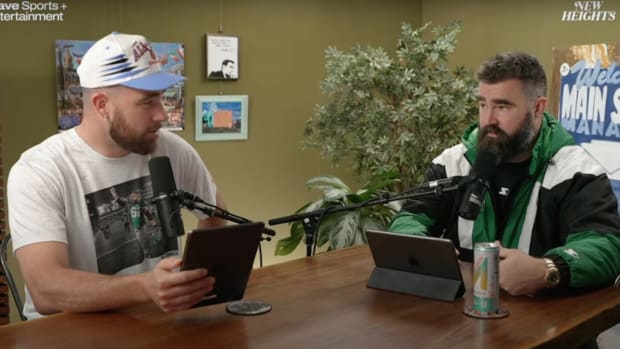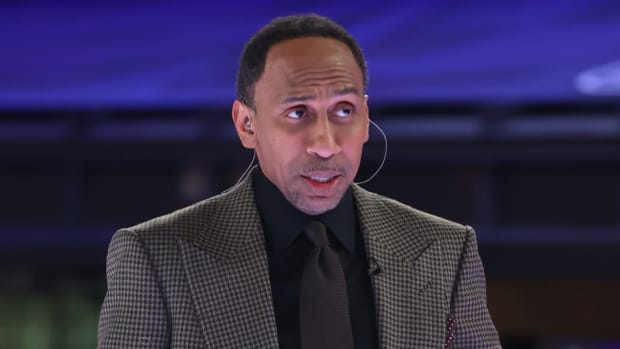How Twitter performed in its first Thursday Night Football live-stream
Read about the latest sports tech news, innovations, ideas and products that impact players, fans and the sports industry at SportTechie.com.
Twitter had one its biggest tests on Thursday night.
As part of a live-streaming partnership with the NFL, Twitter broadcast the first of 10 Thursday Night Football games on Thursday. In the game, the New York Jets defeated the Buffalo Bills 37–31.
While there was plenty of excitement on the gridiron, Twitter’s streaming debut has had everyone in the industry talking about what the future of live television and sports programming looks like.
Subscribe to the
SportTechie Newsletter
- Twitter sets solid foundation in NFL debut
- Could this VR batting system end up in MLB?
- Paralympics star uses Nissan-designed trike
“It feels like this is the future of TV as community as opposed to just being a passive viewer and watching TV,” said Kevin DeShazo, founder of Fieldhouse Media, a social media training and strategy firm. “For the past several years, we’re watching sports and we’re tweeting about it or posting it on Facebook. Now, we’re seeing what that would look like in one place.”
Added Elizabeth Lindsey, Wasserman’s managing partner of brands and properties: “The magic here is the experience of marrying live content and live commentary.”
Lindsey, who has worked with clients including Microsoft and the NBA at the sports marketing and representation agency, said prior to the game that the live-steam gives millennials and cord-cutters an opportunity to watch content on their preferred mobile or tablet devices.
At the same time, it’s just another alternative viewing option in a fragmented media landscape, one where sports fans are forcing networks, properties and social media entities to figure out new distribution vehicles.
“For people that doubted the legitimacy of social media, this puts a big stamp on it saying, ‘O.K., this really matters. This is significant in our culture. How do we fully embrace this from a media standpoint?’” DeShazo said.
The responses to the live-stream online were largely positive, with HD video quality being a noticeable plus. Users weren’t required to have cable credentials or even a Twitter login to watch.
Additionally, beyond the sponsors seen on the Twitter broadcast—such as Verizon, Subway and Home Depot—there were not any sponsored Tweets or obtrusive advertising on the platform.
Conversely, fans and executives, like former CBS Sports GM and current CEO of Digital Content Next Jason Kint, voiced their own frustrations, which included a 15- to 30-second delay at times and the live-streaming layout.
Perhaps the biggest point of contention was Twitter’s curated Thursday Night Football feed versus users having their own feed that they have assembled.
“To a certain extent, yes, it was a bit frustrating not to have my favorite influencers have a more prominent position in the feed,” Lindsey said. “But on the flipside, watching an aggregated feed and sharing the experience made me feel part of a larger moment.”
DeShazo suggested not only giving fans the option of a curated feed, but also including suggested media members to follow along with Tweets and Vines from both teams. The added social integration could complement the existing experience and give fans another way to interact on the platform.
Jimmy Bruns, senior vice president of client services at GMR Marketing, added that it will be interesting to follow how Twitter alters the interface and attempts to tie in more sponsored content, such as an in-game halftime poll or video advertising.
All in all, Twitter passed its initial live streaming test.
“I felt like I was watching the future of sports and live events programming,” Bruns said. “. . . Seeing it on screen with everyone who was tweeting, I felt like there was a different and new energy because you could see everyone talking about the game. It felt like a bigger event.”

